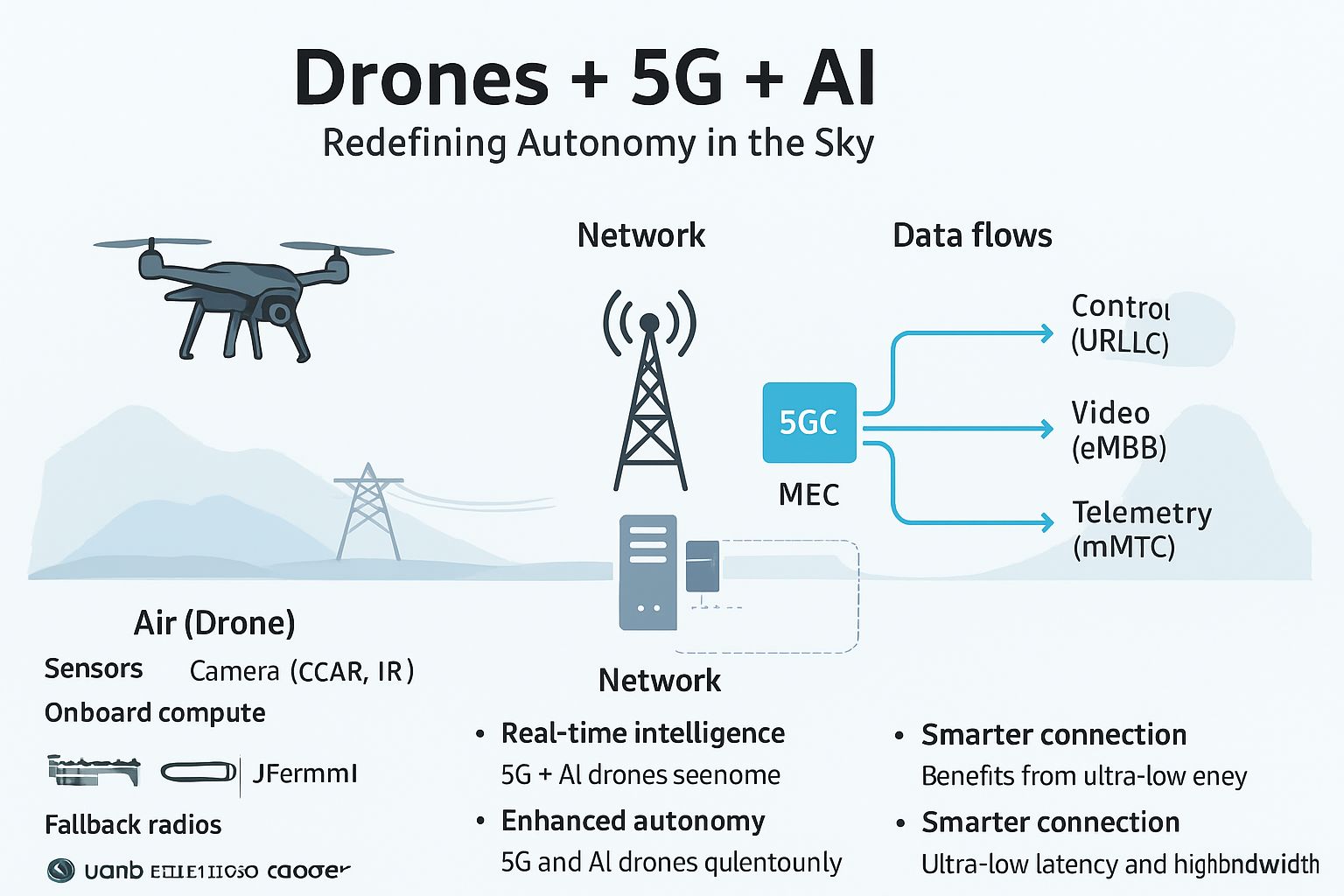Drones, Drone-Carriers, and Counter-Drones: Inside AUSA 2025’s Unmanned Revolution

Walking the halls of AUSA 2025 felt like entering a world where the sky—not the ground—was the real battlefield. The Washington, D.C. convention center buzzed with unmanned aerial systems of every shape and mission. From swarm-capable microdrones to hybrid platforms carrying smaller drones, and layered counter-UAS systems defending the airspace — the show floor was a vivid tableau of the future of aerial warfare.
From swarms to “motherships”
The day opened with rows of compact, agile UAVs. But soon you came upon surprises: drones that carry drones. These “mothership” platforms were being pitched as force multipliers. Imagine a larger UAV that holds and launches smaller sensors or loitering munitions mid-flight — extending reach, reducing logistics footprints, and enabling distributed missions deep behind enemy lines.
One hybrid quadcopter/fixed-wing demonstrator drew crowds with its ability to hover, then transition to horizontal flight before releasing smaller drones. Multiple vendors showcased systems optimized for modular payloads and autonomous handoffs. The concept underlines a shift: future UAS architectures may increasingly be “nested,” with layered capabilities and autonomy.
The counter-UAS arms race
On the defensive side, AUSA’s halls were lined with counter-drone systems — from soft-kill solutions like jammers and electronic warfare suites to hard-kill interceptors, directed energy modules, and combined sensor-to-shooter chains.
The U.S. Army is pressing hard to close the counter-drone capability gap. Officials emphasized that traditional acquisition cycles are too slow for today’s rapidly evolving drone threat. Adversaries are fielding cheap, fast-evolving swarms — while traditional interceptors remain expensive and scarce. The new focus is on agility, iteration, and affordability.
One of the marquee developments: new low-cost interceptors designed to defeat small, one-way attack drones. Meanwhile, next-generation fire control systems promise faster integration between sensors, shooters, and human oversight — showing how the Army is betting on algorithmic coordination to outpace drone threats.
Logistics under fire, and new deployment concepts
A recurring theme through the show was not just “how do we fight drones?” but “how do we survive while being under drone pressure?” Army logisticians warned that sustainment units must adopt counter-UAS tools as standard. Embedding counter-drone defenses into supply convoys and depots is now a mission-critical requirement. Indeed, the conventional view that only front-line units need UAV defense is collapsing — if logistics fails, the whole force fails.
This threat awareness is driving new deployment models. One example: mobile “flyaway kits” of counter-UAS tools, quickly transportable to vulnerable bases. These kits bundle sensors, jammers, effectors, and command components into modular, scalable packages that can be fielded rapidly. Compact systems like the Small-Unmanned Air Defense System (SUADS) were showcased as scalable options for base protection and convoy security. Flexibility is key: many of these systems are marketed as plug-and-play blocks that can be networked or swapped by mission tasking.
Innovation and tensions
One tension is cost: drones are getting cheaper and proliferating fast. The Army and its partners are experimenting with rapid prototyping and additive manufacturing to reduce development cycles and shrink unit costs. But countering drone swarms at scale means embracing layered defenses — multiple sensors, combined electronic jamming and kinetic interceptors, and evolving algorithms for target discrimination.
Another tension: autonomy and rules of engagement. As drones and counter-UAS systems become more autonomous, the question of when a system is permitted to neutralize a target without human approval becomes ethically, legally, and operationally complex. The show floor reflected this duality: excitement about autonomous innovation paired with caution about control and accountability.
Takeaways from AUSA
- Drones deploying drones is no longer just a science-fiction concept — it’s emerging as a real architectural direction for UAS fleets.
- Counter-UAS is no longer niche — it is an essential, integrated capability across combat, logistics, and rear-area domains.
- Speed and modularity win — systems that can rapidly iterate, upgrade, and integrate are outpacing traditional defense programs.
- Sustainment must defend itself — the old separation between “combat systems” and “logistics systems” is eroding under drone threat.
- Cost discipline matters — affordable interceptors, layered defenses, and modular upgrades are now strategic imperatives.
Walking those show-floor aisles, it’s clear: the next decade of warfare will be unmanned, distributed, and contested from above. At AUSA 2025, the future of air warfare — and air defense — was already on display.





